Introduction to Minor Arpeggios
As a guitarist, I remember the moment when I first realized the transformative power of minor arpeggios; it marked the beginning of a profound evolution in my playing. I found myself drawn to their intricate melodies, which seemed to breathe life into the most ordinary chord progressions. Yet, it was the nuances of these **guitar arpeggios** that truly elevated my musical expression, giving voice to emotions that words alone could not capture. This set me on a path of exploration, diving deep into the world of arpeggio theory and music theory for guitar.
Minor arpeggios are not just technical exercises; they are fundamental elements that shape the soul of music. They have the unique ability to add depth and dimension to any piece. Throughout this guide, I aim to unravel the complexities of these arpeggios, guiding you through essential shapes, advanced techniques, and practical exercises. Whether you’re seeking to enhance your improvisation skills or integrate these arpeggios seamlessly into your playing, this guide will serve as your companion on this musical journey.
Understanding the Theory Behind Minor Arpeggios
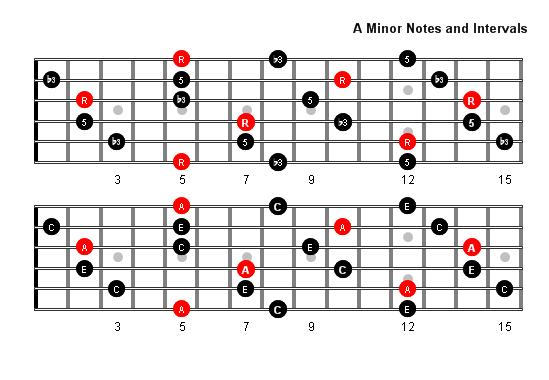
In the journey of mastering minor arpeggios, I’ve often reflected on how grasping the underlying theory served as a creative catalyst. *Why do some guitarists struggle to integrate minor arpeggios into their solos?* The answer frequently lies in the foundational understanding of minor triads and musical intervals. Initially, I too found myself mystified by the harmonious possibilities that eluded me simply due to a lack of theoretical grounding.
Drawing from my extensive background in contemporary improvisation, I discovered that minor triads serve as *building blocks*—a crucial insight when weaving them seamlessly into solos. Each triad comprises a root, minor third, and perfect fifth, providing a *distinct sound palette* that enriches the guitar’s melodic expression. Recognizing how these components interact within the framework of guitar scales was transformative for my playing. It unlocked avenues of exploration, turning previously daunting sequences into expressive outpourings of emotion.
Through dedicated practice, these arpeggios became intuitive tools. Grasping how each note’s interval relates and resonates across the fretboard can transform mere finger exercise into profound self-expression. I’ve seen firsthand how this deeper understanding can demystify complex arpeggio passages, enabling a fluid integration into solos that once seemed unattainable. This *conceptual clarity* sets the stage for exploring more advanced applications of minor arpeggios, making their use second nature and enhancing one’s improvisational flair.
Essential Minor Arpeggio Shapes
Common Minor Arpeggio Shapes
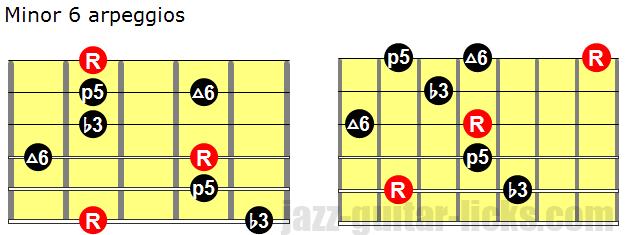
What if mastering just three shapes could *drastically* improve your solos? This is the magic of common minor arpeggio shapes. These staple patterns serve as the foundation for crafting memorable and expressive solos. Within the framework of essential minor arpeggio shapes, focusing on a handful of configurations can significantly elevate your guitar playing.
Adam Perlmutter often emphasizes how proficiency in *common shapes* establishes a versatile platform for anyone keen on improvisation. To begin, visualize these arpeggio shapes as skeletal outlines of minor chords. Imagine your fingers walking through each note on the fretboard—a dance orchestrated by muscle memory acclimated through consistent practice.
Utilizing guitar tabs as your guide, start with the root positions and branch out into first and second inversions, which allow for seamless connections and transitions between solo sections. This understanding not only fortifies your improvisational skillset but also harmonizes your technique with theoretical knowledge. As you embrace these building blocks, you’ll create a fluid and dynamic playing style, preparing you for the nuanced world of advanced minor arpeggio shapes.
Advanced Minor Arpeggio Shapes
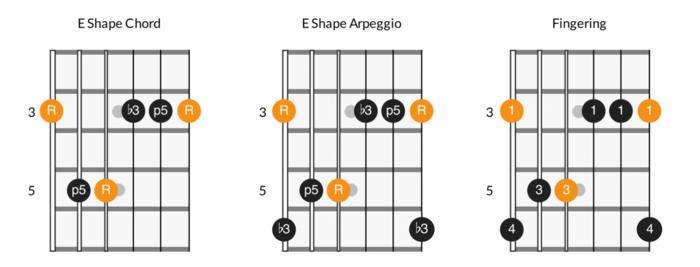
How can advanced arpeggio patterns elevate your guitar solos from basic to extraordinary? It’s a question every guitarist should ponder as they expand their techniques. Building upon *Essential Minor Arpeggio Shapes*, advanced patterns unlock a new layer of expression and *creative freedom*. These shapes aren’t just about complexity; they invite a deep understanding of *musical context* and drive your improvisation to new heights.
By focusing on these advanced patterns, you are introduced to *unfamiliar intervals* and *unique finger positions*, pushing you beyond the familiar fretboard paths. Practicing arpeggios with these complex shapes will enhance your technique and broaden your *musical vocabulary*, enabling you to weave them seamlessly into solos. As a guitarist passionate about improvisation, I’ve found that challenging myself with these sophisticated structures not only sharpened my skills but also sparked imaginative riffs and melodies.
Incorporating these into your routine allows for organic transitions in your playing style, and as we move forward, understanding how to effectively integrate these arpeggios can transform your sound from predictable to truly remarkable.
Minor Arpeggio Exercises for Practice
Basic Practice Exercises
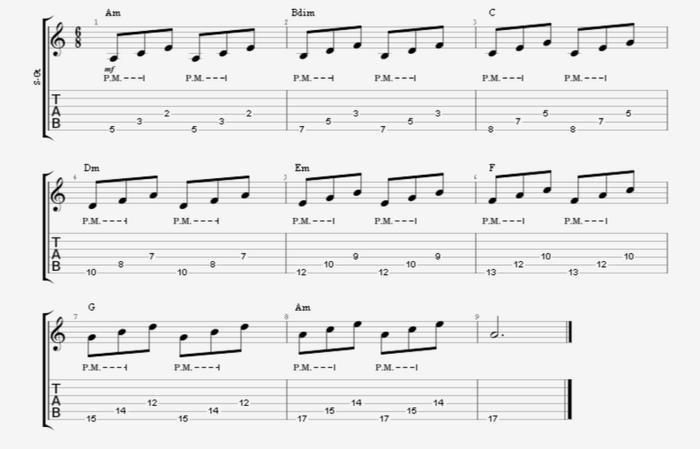
In my journey to mastering the guitar, I discovered that starting with basic exercises is indispensable for building a solid foundation. It’s a principle I emphasize with any aspiring guitarist because these exercises serve as the cornerstone for advanced playing and improvisation techniques. So, what are the must-know basics that every guitarist should practice to excel? Simple yet effective minor arpeggio exercises not only bolster your technique but also deepen your understanding of the fretboard. These exercises train your fingers to move efficiently, enhancing your agility and precision.
Having spent countless hours refining my technique, I can affirm that basic exercises create a pathway to more complex arpeggio shapes and applications. They seamlessly bridge the gap between theoretical knowledge and practical application, preparing you for the more challenging exercises that follow. As we dive into these foundational exercises, remember that their consistent practice is key to unlocking your potential across any musical genre and integrating them deeply into your playing style.
Improvisation Techniques with Arpeggios
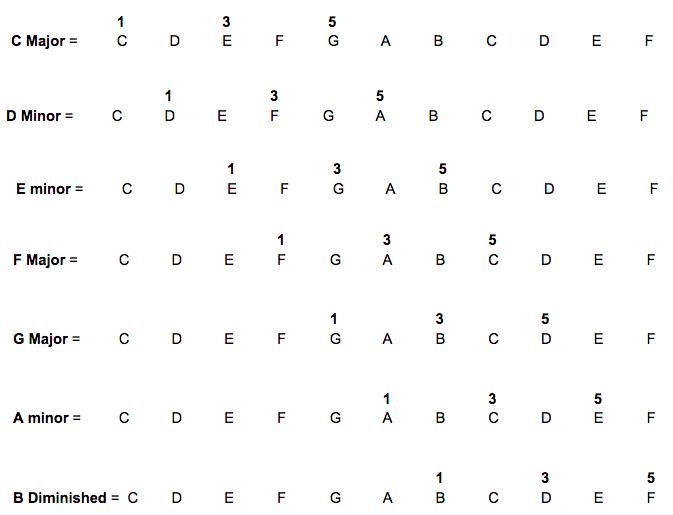
As someone deeply invested in pushing the boundaries of musical expression, I often explore the realm where improvisation techniques meet structured practice. *How can mastering improvisation with arpeggios redefine your guitar solos?* This pivotal question underscores the significance of integrating these techniques into your practice regimen. With an emphasis on minor arpeggio exercises, this approach not only enhances technical proficiency but also fosters creativity and individuality in your solos.
During my years of teaching, I’ve witnessed the transformative power of melding improvisation with arpeggio shapes. This synthesis allows students to break free from rote memorization, encouraging them to trust their musical instincts. By consistently weaving improvisation into practice sessions, you cultivate a dynamic interaction with your instrument that translates into more compelling and confident guitar solos.
In this section, we will delve into the steps necessary to harness this synergy, guiding you on a path where structured practice and spontaneous creativity coexist, ultimately elevating your playing through the strategic use of arpeggio-based improvisation.
Integrating Minor Arpeggios into Your Playing
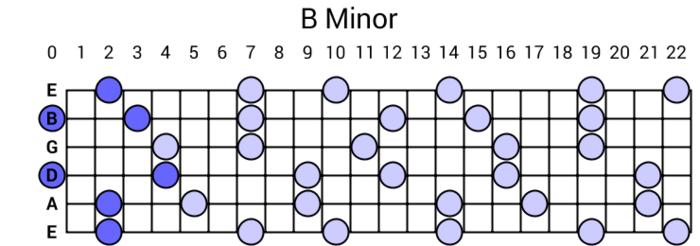
Have you ever felt that something was missing in your solos? Minor arpeggios might be the answer! As a guitarist who’s constantly exploring new ways to enhance my playing, I’ve discovered that integrating minor arpeggios can transform a stagnant solo into a dynamic and expressive one.
Minor arpeggios provide a melodic contour that helps outline the harmony of your music more effectively. When I’m soloing, I often think about where I can incorporate these arpeggios to craft a compelling musical narrative. Whether I’m diving into a melancholic blues tune or a complex jazz improvisation, *minor arpeggios naturally fit* into various musical environments, enriching my overall playing experience.
One key aspect is understanding music theory for guitar. With a solid grasp of theory, you can identify *where* exactly within your solos these arpeggios can enhance the existing chord progressions. This might be during a key change or at a pivotal emotional moment in a song. Through practical guitar techniques, I meld minor arpeggios seamlessly into my phrases, ensuring they complement rather than clash with the piece’s harmonic structure.
In practice, I focus on mapping out the fretboard to visualize where these arpeggio shapes align naturally with the scales I’m using. *Applying this technique allows* me to become spontaneous without losing the thematic essence of the solo, marrying the theoretical with the practical in a harmonious blend.
FAQs
What are minor arpeggios on a guitar?
How do you play a minor arpeggio on guitar?
What are the benefits of learning minor arpeggios?
How can minor arpeggios improve my guitar playing?
What techniques should I use to practice minor arpeggios?
Conclusion
What lessons can you carry forward in your guitar journey after mastering minor arpeggios? In my experience, diving deep into the art of practicing arpeggios not only enriches your understanding of music theory but also enhances your overall guitar techniques. Mastery of minor arpeggios opens a gateway to expressive improvisation and inspires creativity in your playing. The various shapes and exercises explored in this guide empower you with a toolkit that can be integrated seamlessly into your musical repertoire.
Embrace this journey of continuous growth by discovering new ways to incorporate these techniques into your playing. As I’ve found, the true magic lies in ongoing practice and the willingness to explore uncharted musical territories. The skills honed through consistent dedication to this craft will not only elevate your playing but also allow your unique musical voice to resonate more clearly. Let these lessons be the stepping stones to an exciting and ever-evolving musical journey.

